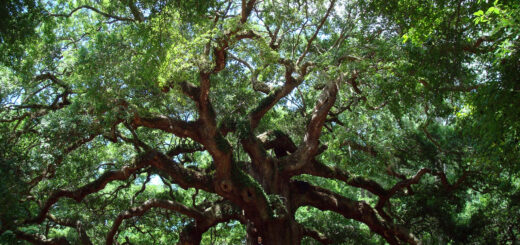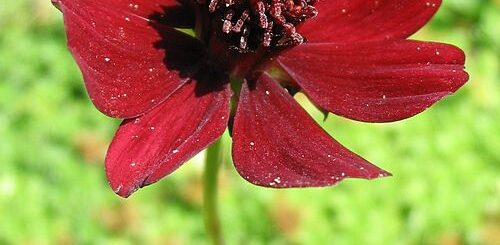Markhor – The Wild Mountain Monarch of the Himalayas
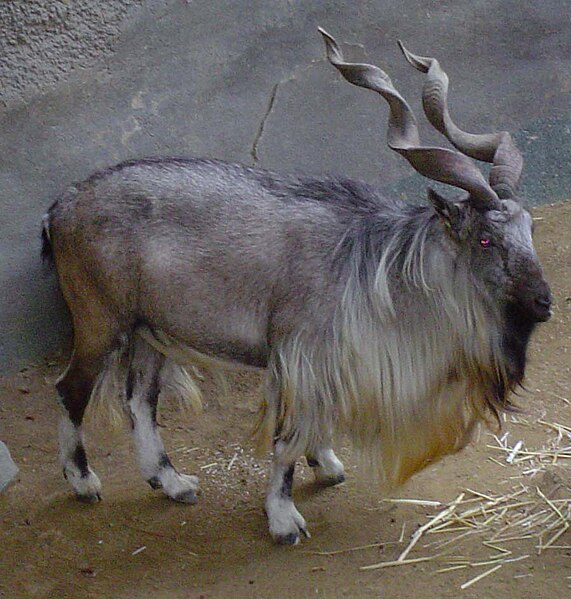
High in the rugged cliffs and forested valleys of Central and South Asia roams a creature that seems pulled from legend, a wild goat with twisted, spiraling horns and a regal stance. Meet the Markhor (Capra falconeri): Pakistan’s national animal and one of nature’s most majestic, yet mysterious, mountain dwellers.
A Goat Like No Other
Markhor, whose name comes from Persian words meaning “snake eater”, is a large species of wild goat. The origin of its name is the subject of much folklore, some say it’s due to the twisted, snake-like shape of its horns, while others believe early stories told of markhors killing snakes.
Standing up to 3.7 feet at the shoulder, up to 73 inches long and weighing around 50–110 kg, markhors are hard to miss. But what truly makes them stand out are their impressive spiral horns, which can grow up to (63 in) long in males, (10 in) in females. Their coats change with the seasons, thicker and shaggier in winter, sleeker in summer and their coloring blends perfectly into rocky terrain.
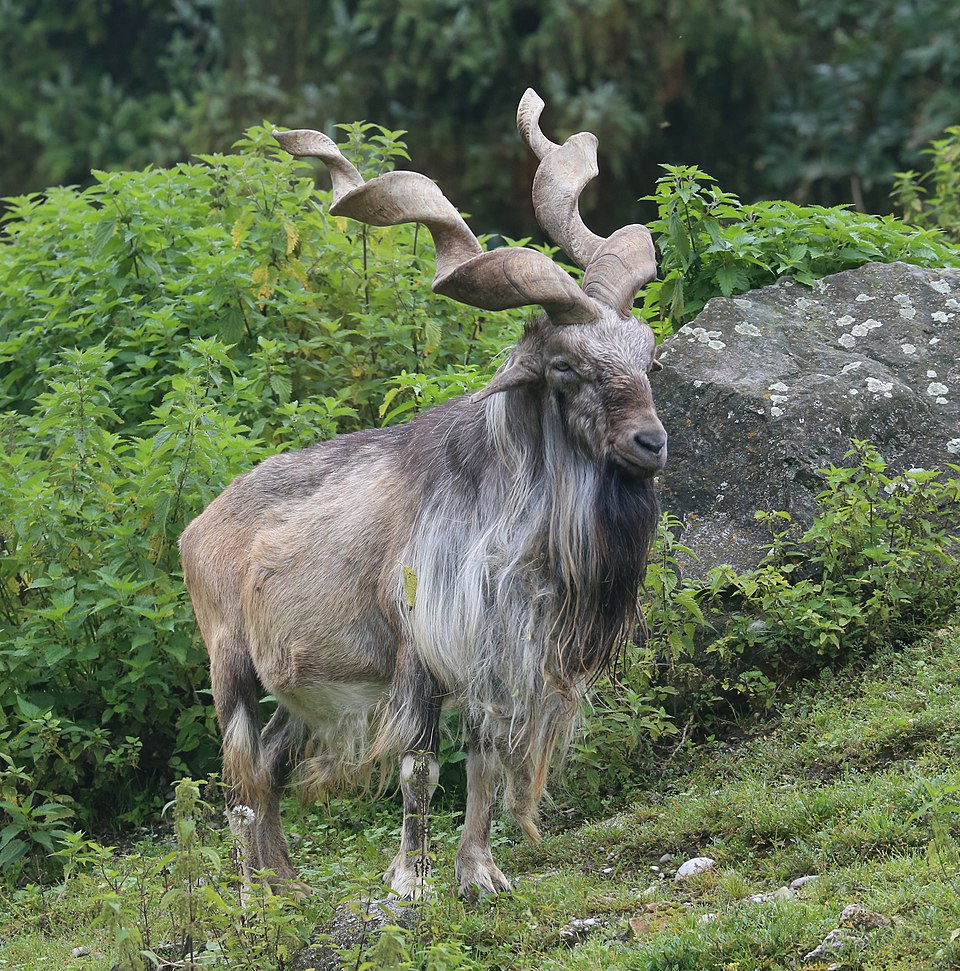
Markhor (Schraubenziege), Capra falconeri, Zoo Augsburg – Creative Commons | Author: Rufus46 – Source: https://commons.wikimedia.org/wiki/File:Markhor_Schraubenziege_Capra_falconeri_Zoo_Augsburg-02.jpg
Life on the Edge (Literally)
Markhors live in steep, inaccessible areas of mountainous regions, including northern Pakistan, Afghanistan, India, Tajikistan, and Uzbekistan. These rugged environments make them elusive and difficult to study, but they’ve adapted brilliantly to life on vertical cliffs. Agile and sure-footed, they move effortlessly across rocky slopes where predators and even humans, struggle to follow.
They’re most active during the early morning and late afternoon, spending their days grazing on leaves, grasses, and shrubs. Despite their tough exterior, markhors are cautious and alert, always on the lookout for threats such as wolves, snow leopards, and increasingly, humans.
From Endangered to a Conservation Success Story
Not long ago, the markhor was on the brink of extinction. Poaching, habitat loss, and competition with domestic livestock had pushed their numbers dangerously low, leading the IUCN to list them as Endangered.
But here’s the good news: in recent years, the tide has turned.
Thanks to conservation programs, especially community-led trophy hunting initiatives in Pakistan, local populations have rebounded. These programs allow limited, highly regulated hunting, where hefty permit fees go directly to local communities and conservation efforts. As a result, locals have become stewards of the markhor’s survival. In 2015, the IUCN officially downlisted the markhor from Endangered to Near Threatened, a rare conservation success story.

Female with young, at the Columbus Zoo and Aquarium. – Creative Commons | Author: Postdlf – Source: https://commons.wikimedia.org/wiki/File:Capra_falconeri_at_the_Columbus_Zoo-2011_07_11_IMG_0786.JPG
Cultural and National Significance
In Pakistan, the markhor isn’t just a wildlife icon, it’s a symbol of strength, resilience, and pride. It’s featured on currency, military insignias, and conservation campaigns. Its unique presence in mythology and folklore adds to its mystique.
Yet, even with improved numbers, the markhor’s journey isn’t over. Ongoing threats like habitat encroachment, climate change, and illegal hunting still loom. Continued conservation is crucial to ensure this mountain monarch keeps ruling the cliffs for generations to come.
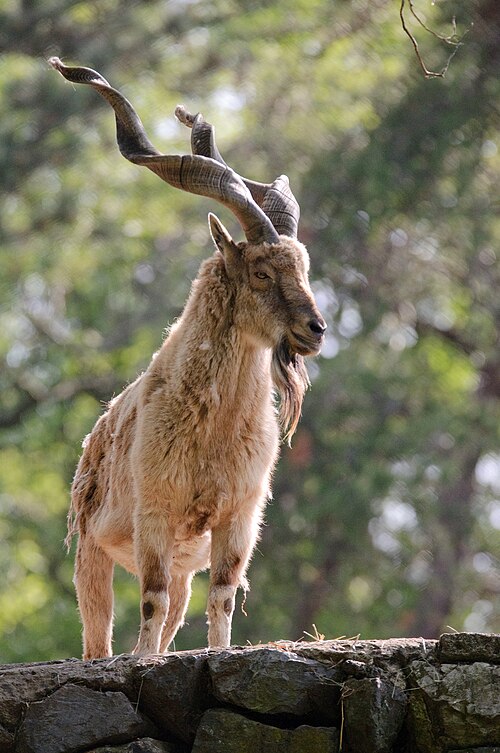
Markhor Horns – Creative Commons | Author: Eric Kilby – Source: https://commons.wikimedia.org/wiki/File:Markhor_Horns_(5779055412).jpg
Markhor Subspecies
Multiple subspecies have been recognized, often based on horn configuration, but it has been shown that this can vary greatly even within the same population confined to one mountain range.
- Astor markhor or Astore markhor (C. f. falconeri)
- Bukharan markhor (C. f. heptneri)
- Kabul markhor (C. f. megaceros)
- Kashmir markhor (C. f. cashmiriensis)
- Sulaiman markhor (C. f. jerdoni)
Why the Markhor Matters
Beyond its beauty and mystique, the markhor is an indicator species, its survival signals the health of the fragile mountain ecosystems it inhabits. Protecting the markhor means protecting forests, water sources, and biodiversity that countless other species (including humans) depend on.
In a world where many wild creatures are slipping away unseen, the markhor stands as a beacon of what’s possible when people and wildlife coexist. Majestic, elusive, and resilient, the markhor doesn’t just survive, it thrives on the edge of the wild.
References:
Wikipedia

